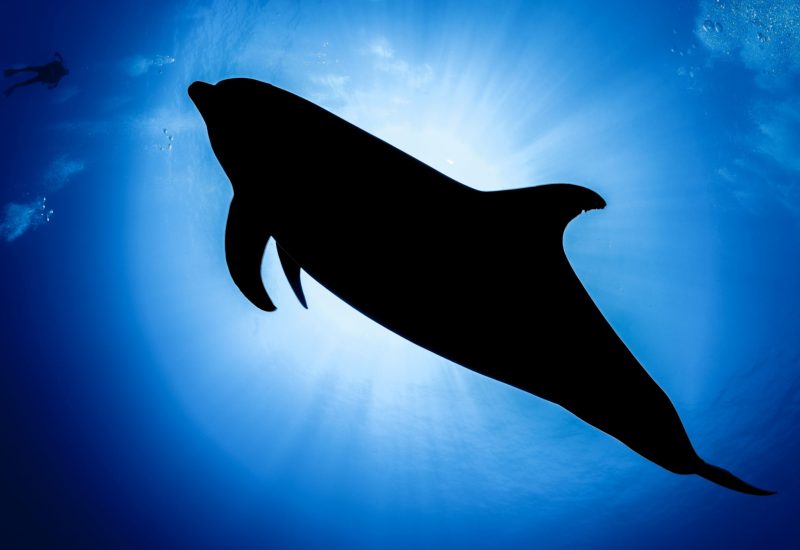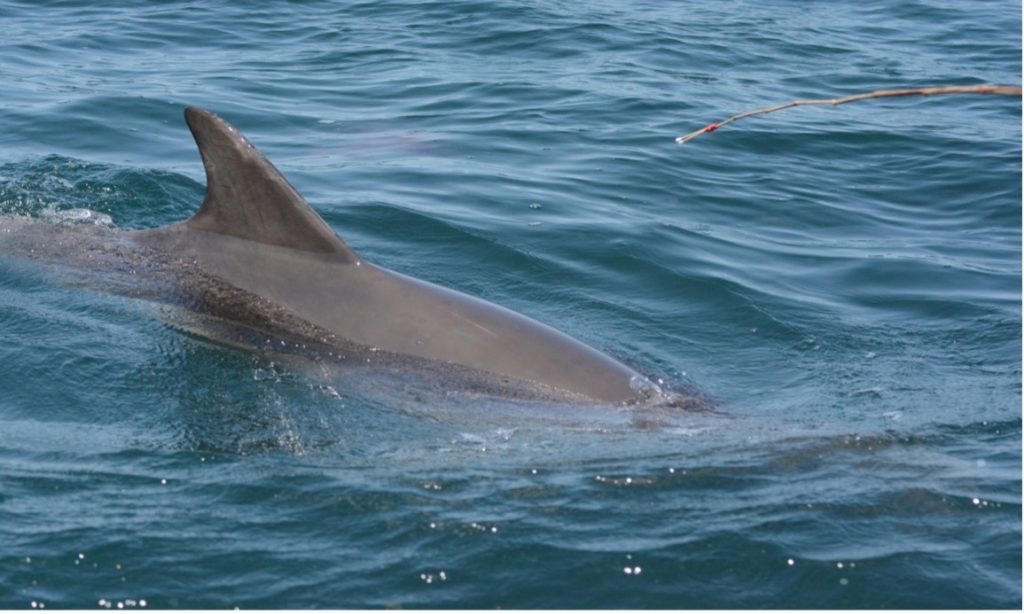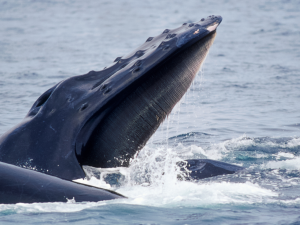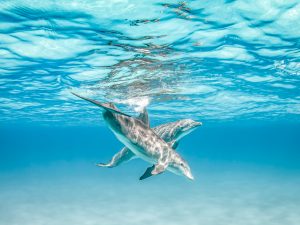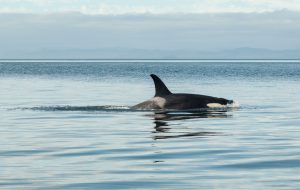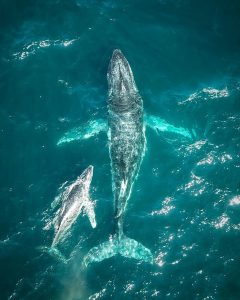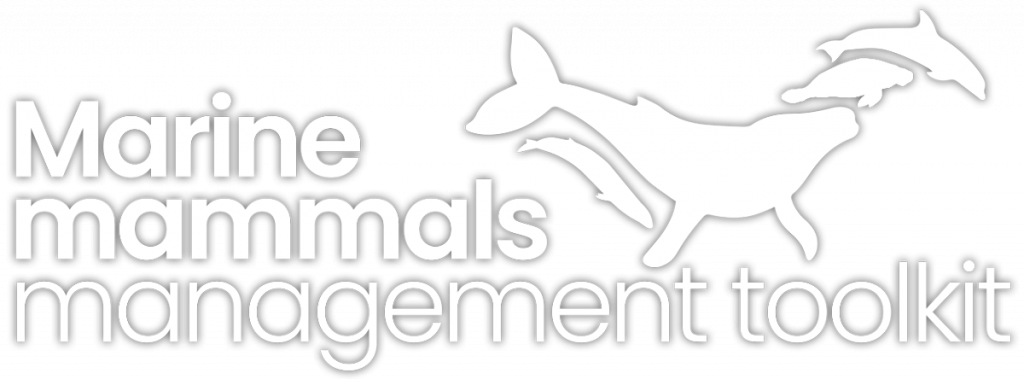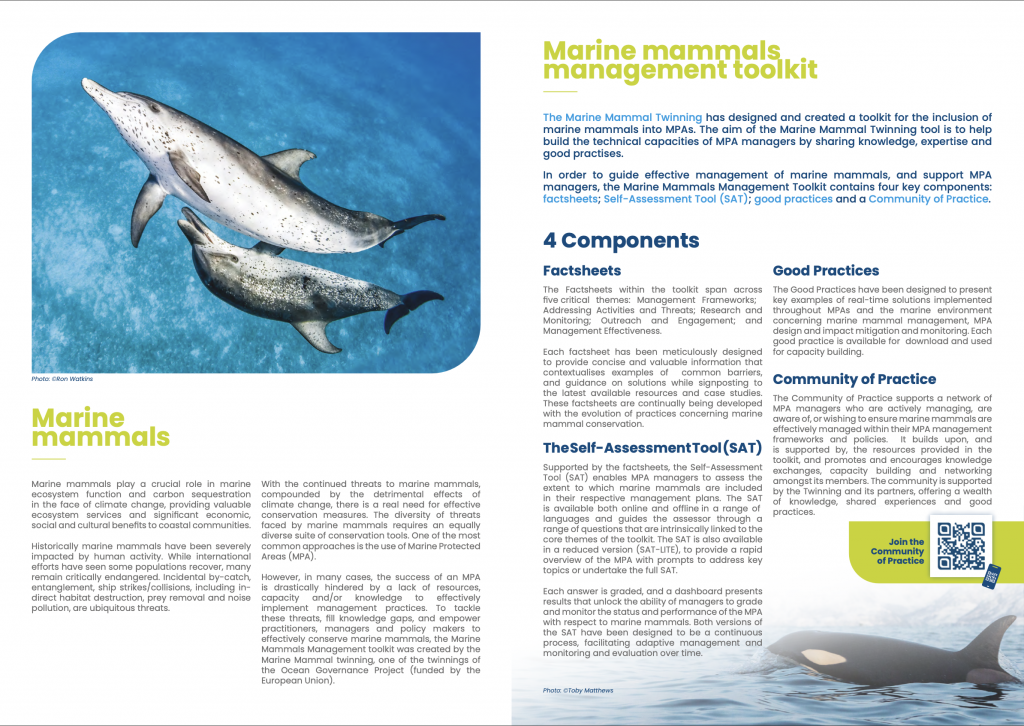The Iroise Natural Marine Park hosts two coastal groups of bottlenose dolphins (Tursiops truncatus) which are present all year around the island of Sein and the archipelago of Molène.
There are only three groups of coastal bottlenose dolphins in mainland France (8 in Europe): two in Iroise and one in the Normand-Breton Gulf. A 4th group that lived in the Arcachon basin disappeared in 2001.
Knowing the dynamics of these groups is fundamental to considering their conservation. It is particularly necessary to be able to estimate the genetic diversity within each group. It is also fundamental to identify gene flows between relatively rare coastal groups and oceanic groups which are more abundant in terms of numbers of animals. Current monitoring based on photo-identification facilitates the estimation of numbers of individuals per group and the analysis of social interactions but does not allow any genetic characterization of this type.
We therefore do not know if these groups are family groups, possibly matriarchal, nor if individual dolphins move between the groups or if gene flows exist:
- between the 3 coastal groups of the French coast,
- between Iroise coastal groups and English coastal groups,
- between the Iroise coastal groups and the oceanic bottlenose dolphins which sometimes move into inshore waters.
A good understanding of the genetic connections between these groups will allow us to take into account their specificities in order to adopt appropriate conservation measures.
At this stage, all genetic work conducted on bottlenose dolphins has been done using biopsies. Skin, blubber and muscle samples are most often taken with a crossbow or a rifle. Until now, the Iroise Marine Natural Park has not wished to use these methods, judging them too intrusive for coastal groups.
The project, conducted in partnership with the Institut de Systématique, Évolution, Biodiversité (ISYEB, UMR 7205MNHN, Sorbonne Université, CNRS, EPHE, Université des Antilles), aims to study the genetic links between the two groups of coastal dolphins of the Iroise but also to compare them to other groups of bottlenose dolphins already studied: in the Normand-Breton Gulf, in England, in the Mediterranean Sea as well as oceanic groups. The results of this work should provide a particularly useful insight into the population dynamics and help to consider management measures at an appropriate scale.

The ISYEB laboratory will be in charge of the analysis of the samples, the interpretation of the results and their valorization in connection with the Marine Natural Park team which will carry out the sampling.
These samples will be taken by the park teams using swabs on dolphins from the chaussée de Sein group and dolphins from the Molène archipelago. If possible, if oceanic groups of bottlenose dolphins approach our coast, samples could also be taken from these animals.
These samplings will be coupled as much as possible with photo-identification. Thus, the sampled individual could be identified in the database (BD Obsenmer of the GECC). The coupling photo-identification/sampling will allow to sex in a certain way the individuals already present in the database but will also provide plentiful information about social interactions in the group. The objective is the realization of about 35 samples per year distributed through 2 groups and this over the years 2021, 2022 and 2023. In any case, a maximum number of 100 samples is set for this study.
Source: Cecile Gicquel, Iroise Natural Marine Park

